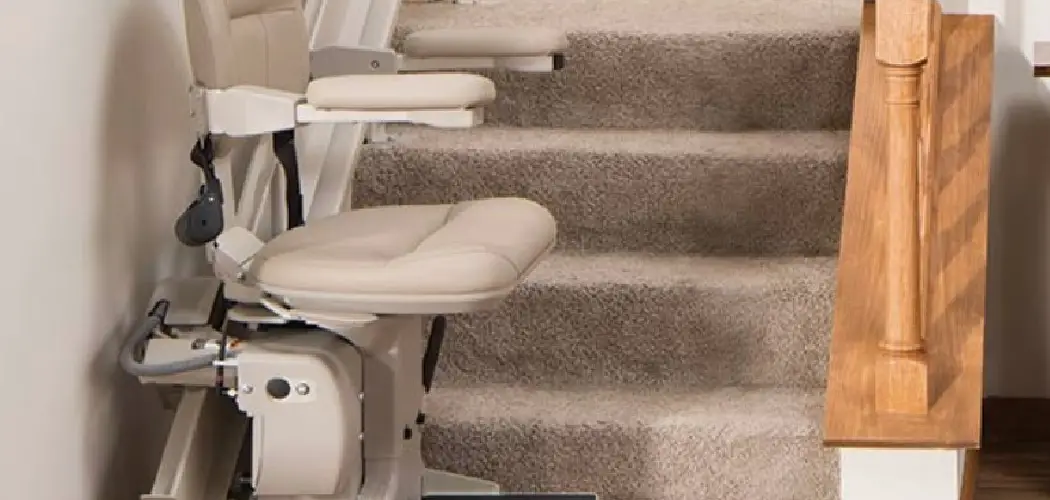As we age, our bodies experience natural changes that can make certain activities more difficult. One common challenge for elderly individuals is navigating stairs. Climbing up and down stairs may become a daunting task due to decreased balance, strength, and mobility. However, this doesn’t mean seniors must relinquish their homes or move to single-story houses. With simple modifications, stairs can be made safer and more accessible for elderly individuals.
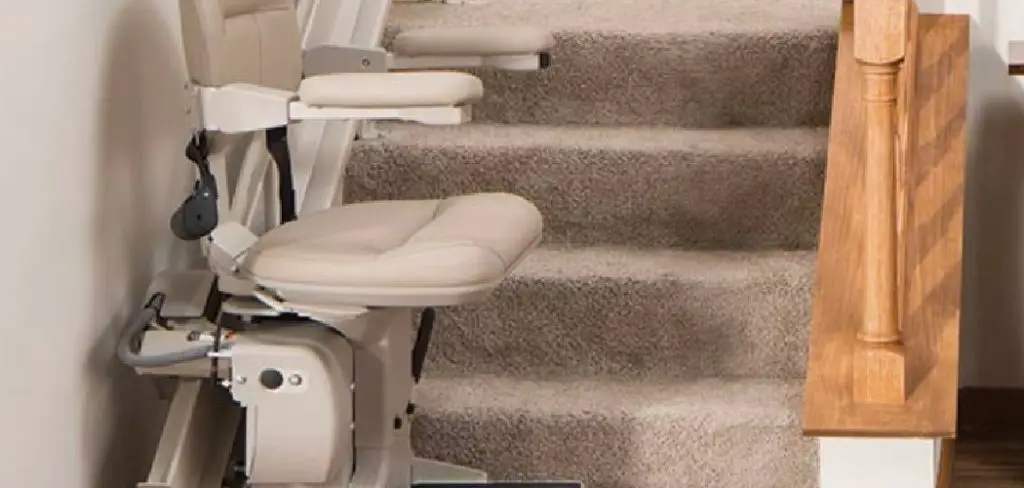
As people age, mobility becomes a growing concern. Simple tasks such as climbing stairs can become difficult and even dangerous for the elderly. That’s why it is important to make necessary modifications to ensure the safety and accessibility of their homes. Modifying stairs for the elderly improves their quality of life and promotes independent living. It allows them to maintain their daily routines without worrying about potential hazards. In this blog post, You will learn how to modify stairs for elderly.
Step-by-step Instructions for How to Modify Stairs for Elderly
Step 1: Inspect the Stairs
Before making any modifications to your stairs, it is crucial to inspect them first. Look for any loose or broken steps, uneven surfaces, or other potential hazards that may pose a risk for an elderly person. If you find any issues, address them before proceeding with the modifications.
Step 2: Add Handrails
Handrails are essential for seniors, providing much-needed support and balance while going up and down the stairs. Install sturdy handrails on both sides of the stairs, ensuring they extend beyond the top and bottom landing for added safety.
Step 3: Increase Lighting
Adequate lighting is crucial for seniors with vision problems. Install bright lights along the stairway to ensure visibility, especially at night. You can also add motion sensor lights that turn on automatically when someone approaches the stairs. To prevent slips and falls, consider adding non-slip treads to your stairs. These adhesive strips or rubber mats provide extra grip and traction, making it easier for seniors to navigate the stairs.
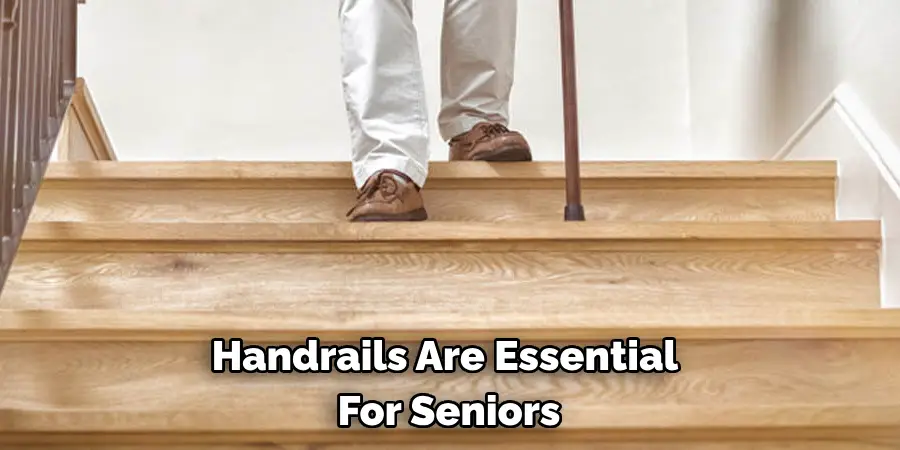
Step 4: Install a Stairlift
If climbing stairs is too strenuous for an elderly person, consider installing a stairlift. This motorized chair glides up and down the stairs, eliminating the need for physical effort. Adding a ramp alongside the stairs can benefit seniors with mobility issues. Ramps provide a gradual incline that is easier to navigate than stairs, making it a safer option for elderly individuals.
Step 5: Make Structural Changes
If your stairs are simply too steep or narrow for an elderly person to use, you may need to make structural changes. This could involve widening the steps, reducing the slope, or even installing a new staircase. Smooth and slippery surfaces can be hazardous for seniors. Consider installing carpeting on your stairs to provide a softer and more secure surface for them to walk on.
Step 6: Ensure Clear Pathways
Ensure no obstacles or clutter around the stairs could cause an elderly person to trip or stumble. Keep the stairway and surrounding areas free of any potential hazards. If your elderly loved one struggles with using the stairs, it may be time to consider a home renovation. This could involve creating a bedroom and bathroom on the main floor or adding an elevator for easier access to different levels of the house.
While these modifications can make stairs safer for elderly individuals, it is crucial to also talk to them about their limitations and encourage using mobility aids when needed. With a few adjustments, stairs can remain a functional and accessible part of their daily routine.
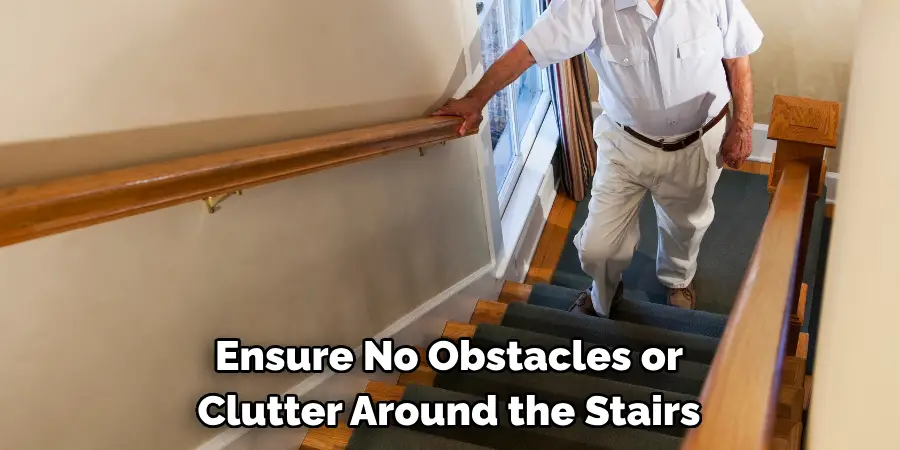
Tips for How to Modify Stairs for Elderly
- Install Handrails – Adding handrails to both sides of the stairs can significantly increase the safety and stability of elderly individuals. Ensure they are securely attached and comfortable for assistance while navigating the stairs.
- Use Non-Slip Treads – Slippery stairs can be hazardous, especially for elderly people with limited mobility or balance issues. Installing non-slip treads on each step can help prevent falls and provide better traction.
- Increase Lighting – Our vision may deteriorate as we age, making it difficult to see steps clearly. Installing additional lighting along the stairs can improve visibility and reduce the risk of tripping or slipping.
- Consider a Stairlift – For elderly individuals with severe mobility issues, a stairlift may be the best option for navigating stairs safely. This chair-like device attaches to the stairs and can transport individuals up and down without using their legs.
- Remove Clutter – Keeping the stairway clear of any clutter or obstacles is crucial for elderly individuals with difficulty with balance or coordination. Make sure there are no loose objects on the stairs that could cause a trip or fall.
- Consider a Ramp – In some cases, it may be necessary to modify stairs completely by installing a ramp instead. This can provide easier and safer access for individuals with walkers, wheelchairs, or mobility aids.
How Do You Make Sure the Modified Stairs Are Structurally Sound and Safe for Use by the Elderly?
Stairs are an essential part of most homes and buildings. However, as we age, stairs can become challenging to navigate safely. This is especially true for the elderly, who may have mobility issues or difficulty with balance.
To make stairs more accessible for the elderly, modifications may need to be made. These modifications can range from simple adjustments to more significant structural changes. But how do you ensure that the modified stairs are safe for use by the elderly? Here are some tips to consider.
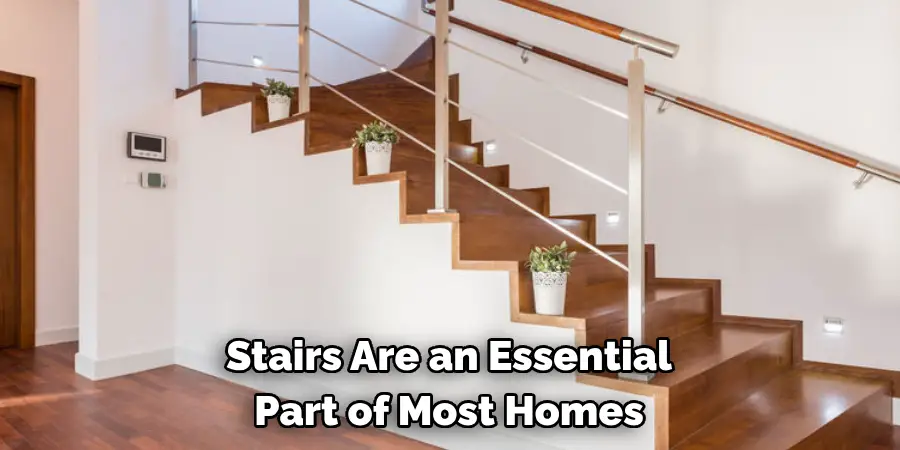
1. Consider the Individual’s Needs
Before making any modifications to stairs, it is crucial to consider the specific needs of the elderly person who will be using them. Factors such as mobility limitations, balance issues, and strength should all be considered. By understanding the individual’s needs, you can make modifications that will best suit their abilities and ensure their safety.
2. Use Handrails
Handrails are essential for anyone using stairs, but they are especially crucial for elderly individuals. Make sure that your stairs have sturdy handrails on both sides and are easily reachable from the top to the bottom of the staircase.
3. Add Non-slip Treads
Slipping and falling on stairs can be a significant risk for the elderly. To prevent accidents, consider adding non-slip treads to each step. These treads come in various materials, such as rubber or carpet, and provide extra traction for better grip.
4. Install a Stairlift
Installing a stairlift may be the best option for those who have difficulty climbing stairs altogether. A stair lift is a mechanical device that carries an individual up and down the stairs, eliminating the need to navigate steps altogether.
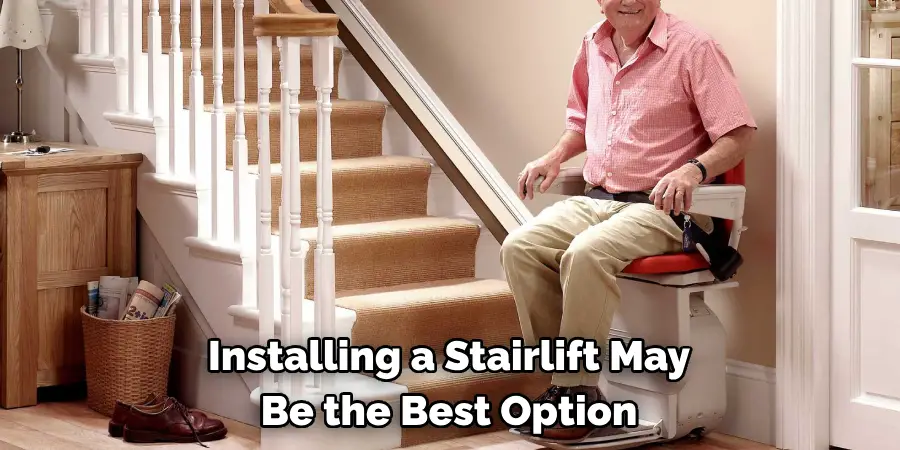
5. Make sure modifications are structurally sound
When making any modifications to stairs, it is crucial to ensure they are structurally sound. This means consulting with a professional contractor or engineer who can assess the changes and ensure they meet safety standards. This step is essential if significant structural changes are being made, such as widening the stairs or adding a stairlift.
6. Keep stairs well-lit
Poor lighting can make navigating stairs even more challenging for the elderly. Ensure all staircase areas are well-lit, including the top and bottom landings. Consider installing motion-sensor lights that turn on automatically when someone is using the stairs.
7. Regular maintenance and repairs
Once modifications have been made, keeping the stairs in good condition is essential. Regularly check for any signs of wear or damage and repair as needed. Look for loose handrails, uneven steps, or any other potential hazards.
Overall, modifying stairs for the elderly requires careful consideration of the individual’s needs and proper planning. By following these tips, you can help ensure that the modified stairs are structurally sound and safe for use by the elderly.
What Are Some Common Mistakes to Avoid When Modifying Stairs for the Elderly?
When it comes to modifying stairs for the elderly, people make some common mistakes. These mistakes can result in accidents or improper modifications that don’t improve accessibility for the elderly. This section will discuss some of these mistakes and how to avoid them.
1. Not Considering Individual Needs
One of the biggest mistakes when modifying stairs for the elderly is not considering their needs. Each person’s mobility and accessibility needs are different, so assessing them before making any modifications is important. For example, some elderly individuals may need handrails on both sides of the stairs for better balance, while others may only need a railing on one side.
2. Not following Building Codes
Another common mistake is not following building codes when modifying stairs for the elderly. Building codes are implemented to ensure safety and accessibility, so adhering to them is important. This includes proper railing height, width of stairs, step size, and tread depth.
3. Using Slippery Materials
When making stair modifications for the elderly, it’s important to consider the materials used. Avoid using slippery materials such as marble, tile, or polished wood, as these can increase the risk of falls. Instead, opt for materials with more traction and grip.
4. Not Providing Proper Lighting
Proper lighting is essential for elderly individuals to navigate stairs safely. Without proper lighting, they may be unable to see each step clearly, leading to accidents and injuries. Make sure to install bright lights illuminating the stairs and the surrounding area.
5. Neglecting Handrails
Handrails are crucial for providing support and stability while using stairs, especially for the elderly. However, many people need to pay more attention to installing or properly maintaining handrails when modifying stairs. It’s important to have handrails installed and ensure they are sturdy and securely attached to the wall.
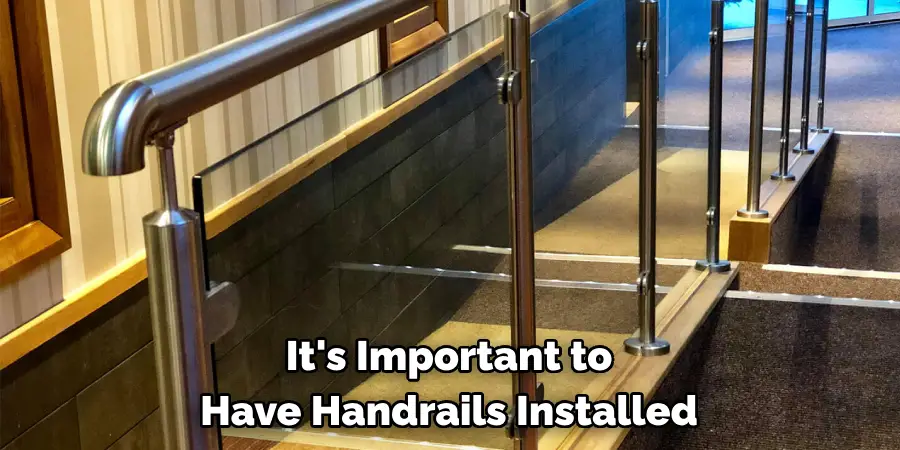
By avoiding these common mistakes, you can ensure that the modifications made to stairs for the elderly are effective and safe. Always consider individual needs, follow building codes, use appropriate materials, provide proper lighting, and include handrails for a successful modification process.
Conclusion
In conclusion, modifying stairs for the elderly is important in ensuring their safety and accessibility within a home or building. By following these tips, such as using handrails, adding non-slip treads, and installing a stairlift if necessary, you can greatly improve the functionality of stairs for elderly individuals.
It’s also crucial to keep up with regular maintenance and avoid common mistakes when making modifications. By considering individual needs and adhering to building codes, you can create a safe and functional staircase for the elderly. I hope reading this post has helped you learn how to modify stairs for elderly. Make sure the safety precautions are carried out in the order listed.
About
Angela is the chief editor of Indoorense. She began her career as an interior designer before applying her strategic and creative passion to lifestyle and home.
She has close to 15 years of experience in creative writing and online content strategy for housekeeping and cleaning,home decorations as well as other efforts.
She loves her job and has the privilege of working with an extraordinary team. She lives with her husband, two sons, and daughter in Petersburg. When she’s not busy working she spent time with her family.

